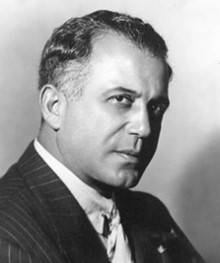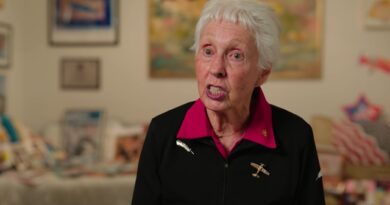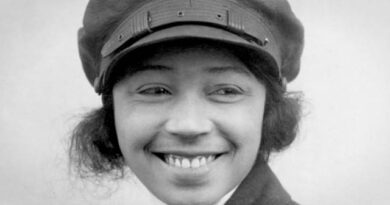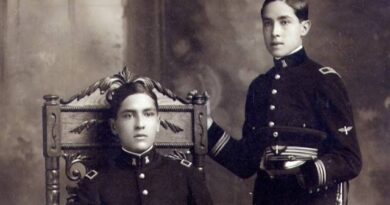Assen Jordanoff – The Legendary Bulgarian Aviator
When asked about the most important names in the history of aviation and aerospace, the majority of people would most likely talk about the Wright brothers, the pioneering inventors who built the world’s first successful plane or maybe the famous astronaut Neil Armstrong who is the first person to walk on the Moon. Of course these popular names have a great place in aviation but there are also very important names which are worth
mentioning that don’t get as much recognition as they do, such as Assen Jordanoff, the Bulgarian engineer and aviator who made great contributions to aviation industry.
Along with working as an engineer for many aviation companies including Curtiss-Wright, Boeing, Lockheed, North American, Consolidated, Chance-Vought, Douglas and Piper and writing the instruction books and manuals for their numerous aircraft models like Curtiss P-40 Warhawk, the Lockheed P-38 Lightning, the North American B-25 Mitchell, the Boeing B-17 Flying Fortress, the Consolidated B-24 Liberator, the Boeing B-29 Superfortress, and the Douglas DC-3, Assen Jordanoff also had a successful career as an aviator, working proficiently as a test pilot, airmail and air taxis pilot, stunt pilot, and flying instructor.
Founder of Aeronautical Engineering in Bulgaria

Aside from his professional success as an engineer and a pilot, Assen Jordanoff also published quite a few publications on aeronautics and about his inventions in other fields. Because of his contributions to the aviation industry, Jordanoff is regarded as the founder of aeronautical engineering in Bulgaria and one of the most important people that supported the growth of the field in the United States.
As a very successful inventor, engineer and a pilot who took a great part in advancing the aviation industry, Assen Jordanoff is a name that is worth remembering among many others and his inspiring life story is worth talking about. So, join us and learn more about the life of this ingenious and brave aviator and see what important lessons we can learn from him.
Background and Early Life of Assen Jordanoff
Assen H. Jordanoff was born on the 2nd of September 1896 in Sofia, Bulgaria to a wealthy family which owned some coal and copper mines along with a family farm. As an economist as well as a chemist who spoke several languages, Jordanoff’s father was truly a good example of the archetypal “Renaissance man” like himself. Assen Jordanoff’s mother came from a rich family and she studied singing in Italy and later published a famous cookbook. Jordanoff also had five siblings, one of which made a successful career in United States as a violinist.
Assen Jordanoff had a unique interest for the skies from a very early age and spent a lot of time building kites and daydreaming about being able to fly one day. Coming from a prestigious family, he managed to attend lectures on physics at a university in his teens. Later he went to a boarding school in Switzerland where he studied French and learned about numerous innovations in transportation.
At the ripe age of 16, Assen Jordanoff built his first glider which was mentioned on a newspaper as the “First Bulgarian Glider” and the aircraft completed two successful test flights. At that time, Jordanoff was trying to find a way to get accepted to well known French inventor Louis Blériot’s school, which seemed like an impossible task until he met Lieutenant Simeon Petrov, the famous Bulgarian aviator who introduced Jordanoff to Blériot himself. Although he was not officially enrolled in the school, he could attend classes and meet great aviators there. Having such a privilage certainly helped him develop a vast knowledge in aviation and find motivation to go forward as an inventor.
Assen Jordanoff’s Military Experience
When he was 17 Assen Jordanoff volunteered to join the First Balkan War and served as a car driver. During most of his service, he would go to airplane hangars and study aircraft with immense diligence for hours, copying their designs on a piece of paper. He designed the first Bulgarian-made airplane in 1915 during the war, it was named Diplane Yordanov-1 after himself.
At his young age he was already well known for his skills and he was given a scholarship to study abroad. Later he was drafted for World War I and assigned to the air force as a pilot after graduating from the military school. He completed 84 military missions and was rewarded many insignias of honor for his bravery and competence as a pilot.
Jordanoff’s New Life in the United States
After the World War I, sponsored by the Bulgarian government, Assen Jordanoff travelled to United States with his wartime friend Alexander Stoyanov for a contest involving flying around the world in 100 days. Although the contest was later postponed due to only contestants being him and his friend, Assen Jordanoff decided to stay in the United States and continue his career there.
When Jordanoff moved to United States there was one important detail he overlooked though, it was that he spoke no English at all. Without speaking the language, he couldn’t really make use of his intellectual capacity at first and he made just enough money to get by shoveling snow during the winter. After that he worked as a construction worker while studying English at a local library.
As time has passed, he was able to improve his English and start working at the Curtiss-Wright Corporation while taking courses in engineering, aeronautics, radio electronics, physics, and chemistry. He also managed to graduate from a flying school during that time and later he would work as a test pilot, a sales manager, a stunt pilot and most importantly a flight instructor.
While he was still in his late 20s Jordanoff was invited by Thomas Edison to collaborate on a research project involving a proto-radar system. Assen Jordanoff worked with the famous inventor and businessperson Edison for a couple of months.
Later Years of Assen Jordanoff
After securing a good job where he could employ his real skills, Assen Jordanoff could finally focus on his true passion, which was aviation. During 1930s and 1940s he wrote numerous books on aviation, which later sold more than 750,000 copies in total and turned into incredible resources for aviators following in his footsteps.
As well as educating the aviators of the future with his publications, Assen Jordanoff also built many successful companies such as The Jordanoff Aviation Corporation, The Jordanoff Corporation, The Jordanoff Company and Jordanoff Electronics. His professional career was a textbook example of a success story and his companies collaborated with prestigious firms like Douglas, Chance-Vought, Lockheed, Curtiss-Wright, McDonnell, Boeing, North American, Consolidated and Piper.
Along with the hard work of managing his own enterprises, Jordanoff also kept utilizing his creative skills as a designer and an engineer and wrote manuals for a variety of well known aircraft, some of which were used by the US military during World War II.
Assen Jordanoff an industrious person
One thing we can be sure about Assen Jordanoff is that he was quite an industrious person and juggled many works at once. While building his businesses and publishing educational material on aviaton, Jordanoff also wrote articles on aviation and became well known for his commentaries and editorials. At some point he became the largest American publisher of specialized military manuals.
During 1940s Assen Jordanoff was tasked by the US Department of Defense to put together instruction manuals on military tools, covering subjects such as land support with radio equipment, air meteorology and preparation of pilots for flight during nocturnal piloting.
His success in the aviation industry was obviously undeniable but as an inventive polymath, Assen Jordanoff was highly interested in various different fields and he owned numerous patents in many industries, including an early prototype of a wireless phone and the world’s first airbag that he designed in 1957. But one of his most groundbreaking inventions was the Frozen Gasoline System for airplanes, which worked by cooling the fuel in an aircraft’s tank with dry ice and alcohol. Although the design was never implemented, it lay the groundwork for future projects.
Just like his professional career, Jordanoff’s personal life was quite shifting and mobile. During his lifetime, he had three marriages and spent his later years with his third wife, Lucile Andrews in a small cottage in Harrison, New York. Aged 71, Jordanoff died on the 19th of October 1967 and his ashes were scattered into the air from a plane by his friends.
Assen Jordanoff’s Legacy
Because of his positive influence and noteworthy success, Jordanoff was made an honorary citizen of New York City, but what’s more is that there is even a place in Antarctica named after him; the Jordanoff Bay and his papers and mementoes are held in The Smithsonian National Air and Space Museum.
Due to his countless contributions to the aviation industry, his skill and expertise as an inventor, engineer, businessperson and a competent aviator Assen Jordanoff is a great inspiration for many aviators and anyone with a dream. Although he is not as well known as he should be, Jordanoff is a legendary name in the history of aviation with his clever inventions, helpful publications and inspiring life story.
Resources
Anon. (n.d.), Assen Jordanoff, Wikipedia, Retrieved 24 March 2021 < https://en.wikipedia.org/wiki/Assen_Jordanoff >
Martin (September 8, 2011), Asen Yordanov, Bulgarian inventors, Retrieved 24 March 2021 <http://bginventors.blogspot.com/2011/09/asenyordanov.html >
Plamen Antonov (January 30, 2016), Assen Jordanoff – the man who contributed to America’s airpower, Plamen Antonov’s Pages, Retrieved 24 March 2021 < http://www.pantonov.com/thoughts/assen_jordanoff.php >
For more Aviators click.


